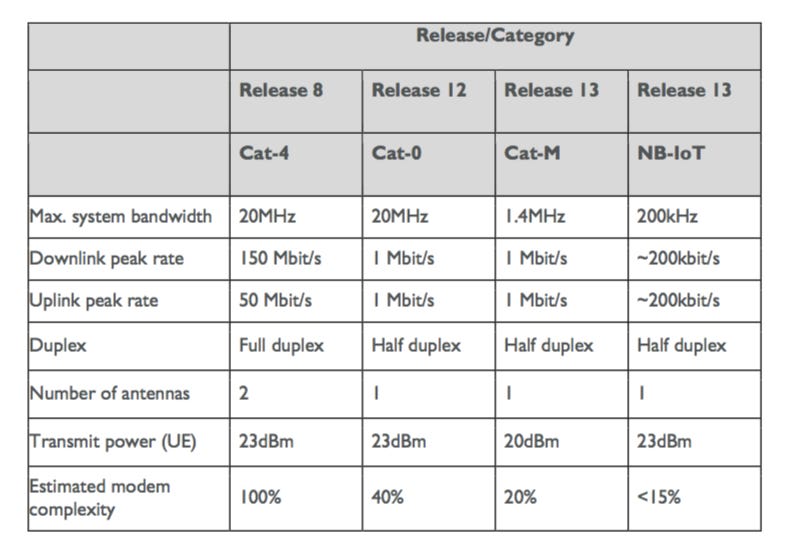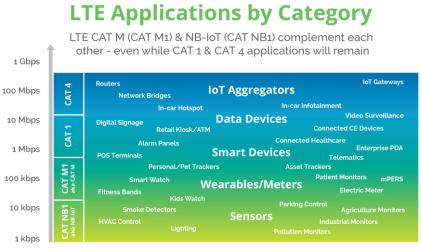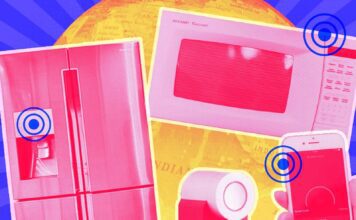
5G is making major waves in IoT, enabling a huge range of new devices and platform architectures. We expect that this could mean innovations like automated lifecycle management, network slicing, software-defined networking, and cloud-optimized distributed network applications. In this article, we’ll talk about some of the expected impacts of 5G and what Cellular IoT actually is.
Mobile phones are already transitioning to 5G, but the future for IoT is right on the horizon. Major telcos have started to use 5G to create unique experiences for sports fans. Vodafone Deutschland delivered a watch party for fans of the 2023 Leipzig vs. Bayern Munich soccer game using 5G. The watch party featured soccer players Robin Gosen of Inter Milan and Melanie Leupolz of Chelsea FC Women commenting on the game in real time. AT&T built 5G immersive experiences for the 2023 College Football Playoff National Championship. These immersive experiences included a Jonas Brothers concert where fans tuning in from their homes could choose from multiple camera angles delivered by 5G-powered devices.
“Mobile phones are already transitioning to 5G, but the future for IoT is right on the horizon.”
-Yitaek Hwang
That’s all very exciting for our industry, but decoding the mess of technical acronyms surrounding 5G technology can limit our ability to understand how 5G will change the IoT landscape. For example, searching “NB-IoT vs. LTE-M” brings up complex summaries like the one below:

Such graphs didn’t help me at all. I got the impression that 3GPP (the group behind 3G) was trying to keep out new players by overwhelming them with mysterious acronyms and exclusive technical definitions. The naming convention indicates that 4G is faster than 3G, which is faster than 2G, so we assume 5G is probably going to follow that trend, but “Cat-1” and “EC-GSM”? What does that mean?
Don’t worry! I did my research and translated the technical details of each 5G option into laymen’s terms to prepare you better to understand these emerging forms of cellular IoT.
Where did Cellular IoT Originate?
The popularity and ubiquity of IoT devices have led to the rise of low-power, wide-area networks (LP-WAN) options such as SigFox, LoRa, and Weightless. (In case you’re wondering, here’s why LPWAN is important in IoT and a breakdown of the different options).
Traditional cellular options such as 4G and LTE networks consume too much power. Moreover, they don’t fit well with applications where only a small amount of data is transmitted infrequently, for example, meters for reading water levels, gas consumption, or electricity use.
Cellular IoT tries to respond to the unending search for better low-power, long-range applications.
Cat-1
Cat-1 represents an early push towards connecting IoT devices using existing LTE networks. While the performance is inferior to 3G networks, it’s an excellent option for IoT applications that require a browser interface or voice. The major attraction is that it’s already standardized, and more importantly, it’s simple to transition into the Cat-1 network. Experts predict that as 3G—and eventually 4G—technologies sunset, Cat-1 (and Cat-M1) networks will take their place.
Cat-0
For LTE-based IoT networks to succeed, they need to have the following characteristics: 1) long battery life, 2) low cost, 3) support for a high volume of devices, 4) enhanced coverage (better signal penetration through walls for example), and 5) long-range/wide spectrum.
Cat-0 optimizes for cost as it eliminated features that supported high data rate requirements for Cat-1 (dual receiver chain, duplex filter). While Cat-1 is replacing 3G, Cat-0 is the protocol that sets the groundwork for Cat-M replacing 2G as the cheaper option.
Cat-M1/Cat-M/LTE-M
Cat-M (officially known as LTE Cat-M1) is often viewed as the second generation of LTE chips built for IoT applications. It completes the cost and power consumption reduction for which Cat-0 originally set the stage. By capping the maximum system bandwidth at 1.4 MHz (as opposed to Cat-0’s 20 MHz), Cat-M has specific Applications for LPWAN applications like smart metering, in which only a small amount of data transfer is required.
But the real advantage of Cat-M over other options lies in this: Cat-M is compatible with the existing LTE network. For carriers such as Verizon and AT&T, this is great news as they don’t have to spend money to build new antennas, although meshing Cat-M into LTE networks requires a software patch. The existing customer bases of Verizon and AT&T will most likely conclude that Cat-M is by far the superior option. Lastly, it’s almost certain that 5G and LTE technologies will coexist well into the 2020s, so the backward compatibility of Cat-M is a bonus.
NB-IoT/Cat-M2
NB-IoT (also called Cat-M2) has a goal similar to that of Cat-M; however, it uses DSSS modulation instead of LTE radios. Therefore, NB-IoT doesn’t operate in the LTE band, which means that providers have a higher upfront cost to deploy NB-IoT.
Nonetheless, NB-IoT is being touted as the potentially less expensive option, because it eliminates the need for a gateway. Other infrastructures typically have gateways that aggregate sensor data, which then communicates with the primary server. (Here’s a deeper explanation of gateways). With NB-IoT, however, sensor data is sent directly to the primary server. For that reason, Huawei, Ericsson, Qualcomm, and Vodafone are actively investing in commercial applications of NB-IoT.
EC-GSM (formerly EC-EGPRS)
EC stands for Extended Coverage. EC-GSM is the IoT-optimized GSM network, the wireless protocol 80 percent of the world’s smartphones use. As the name suggests, EC-GSM can be deployed in existing GSM networks—a huge advantage in terms of practicality and modularity, since a simple piece of software enables EC-GSM connectivity within 2G, 3G, and 4G networks. EC-GSM also has specific Applications in non-Western regions such as Malaysia, and African and Middle-Eastern countries, where 2G remains a popular standard. Ericsson, Intel, and Orange are said to have completed live trials of EC-GSM earlier this year. EC-GSM, however, isn’t generating as much buzz as Cat-M or NB-IoT.
5G Cellular IoT
Unlike the cellular IoT options above, 5G has yet to be officially defined. Next Generation Mobile Networks Alliance (NGMN) is pushing for specs for it to be 40 times faster than 4G while supporting up to 1 million connections per square kilometer. 5G is already enabling high-bandwidth, high-speed applications for Ultra-HD (4k) streaming, self-driving car connectivity, or VR/AR applications, such as Verizon and Samsung showcased at the Superbowl and Olympics respectively. What will the future hold?
Why You Should Care
If you are a cellular carrier provider, you will be forced to choose a technology to deploy to meet the narrowband IoT applications.
For the rest of us, it’s important to understand that these different options do not necessarily have to be mutually exclusive. This extends to other LPWAN players like SigFox, LoRa, and Weightless.
IoT covers a broad spectrum of applications. Sometimes you need high bandwidth, as with real-time surveillance. For asset tracking, data throughput is small, but there are inevitably many handovers as objects move. Smart meters and many smart city use cases require small data transfer once or twice a day. This means that no one technology (even 5G) may fit the specific needs of an IoT solution/device.

Fragmentation within IoT sucks, but sometimes it’s a necessary evil because IoT is by definition such a broad field. Generally, the most important question is, what are the specific requirements and nuances of my Applications? The answer to that question leads you to the question of which connectivity options are best for you.
Originally published on April 17th, 2017. Updated on January 23, 2023.

















 Latest IoT News
Latest IoT News









